Your Complete Guide to Paris Local Transport: From Métro to Bus
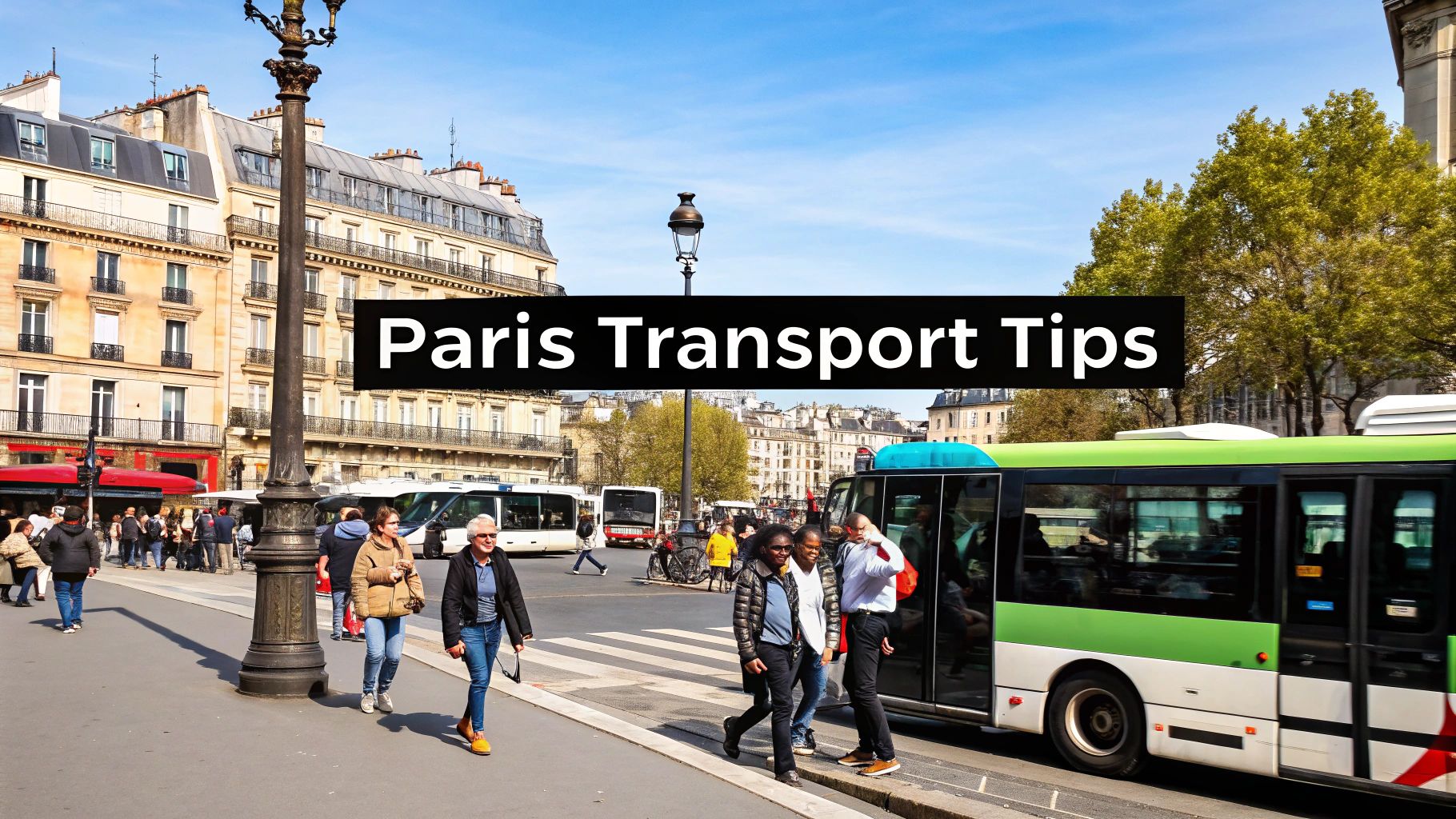
Navigating the Paris Métro Like a Local
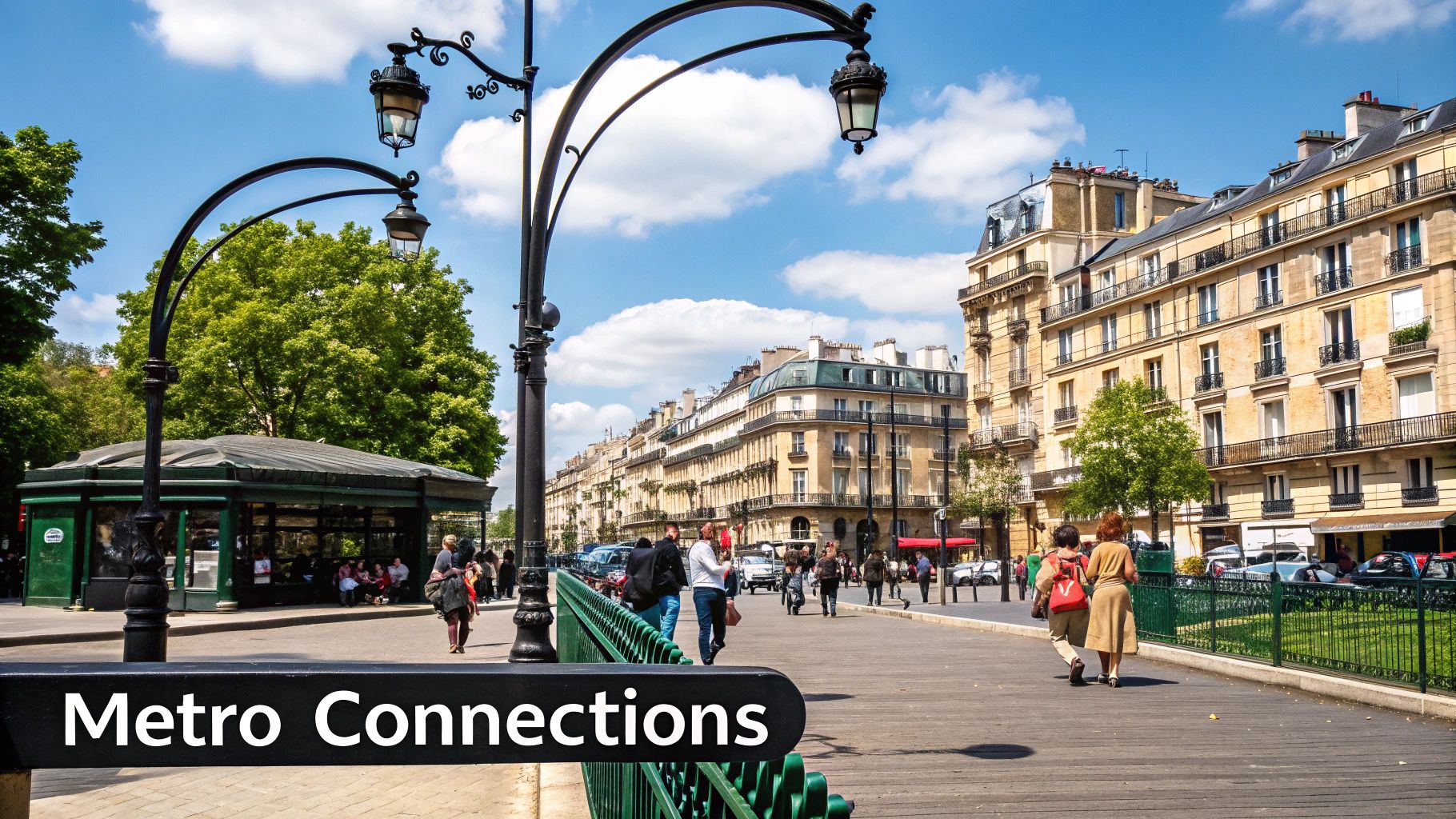
The Paris Métro sistem moves over 4 milion passangers daily across its 16 lines and 320 statons. While this vast network can feel overwheming at first, a few key insigts will help you navigate it confidentlly like a local Parisian.
Understanding the System
The Métro runs with remarkable precission, particulary on its three automatd lines (1, 4, and 14). Line 14, built to reduce overcrowing on the busy RER A route, shows how the sistem prioritizes passanger flow. Cleer signs point the way throughout statons, and trains arive frequently - often just 2-3 minutes apart. Getting familair with the numbered lines and their endpoints is your first step to mastering the sistem.
Mastering Transfers and Connections
The Métro's transfer corridors between lines can save precious time when planned well. However, larger stations like Châtelet-Les Halles have complex layouts that require preparation. Before your trip, check the RATP app or station maps to plot efficient routes. In central Paris, sometimes walking above ground is faster than making underground transfers, since many stations sit just blocks apart.
Avoiding the Crowds and Navigating Rush Hour
During peak hours, strategic choices make all the difference. The front and back cars typically have more space than middle carriages. You can also dodge the heaviest crowds by avoiding major tourist spots during rush hour. Try exploring quieter neighborhoods during busy periods and save popular attractions for off-peak times. This approach lets you see different sides of Paris while enjoying more comfortable rides.
Tips for a Smooth Journey
Learning station layouts pays off quickly. Follow "Sortie" signs to exits and "Correspondance" markers for transfers. Many stations have multiple exits, so knowing which one leads closest to your destination prevents unnecessary underground walks. For stays longer than a week, consider getting a Navigo Découverte pass - it offers unlimited travel within set zones and eliminates the hassle of buying individual tickets. With these tips in hand, you can focus less on navigation and more on experiencing Paris authentically.
Maximizing the Bus Network's Hidden Potential
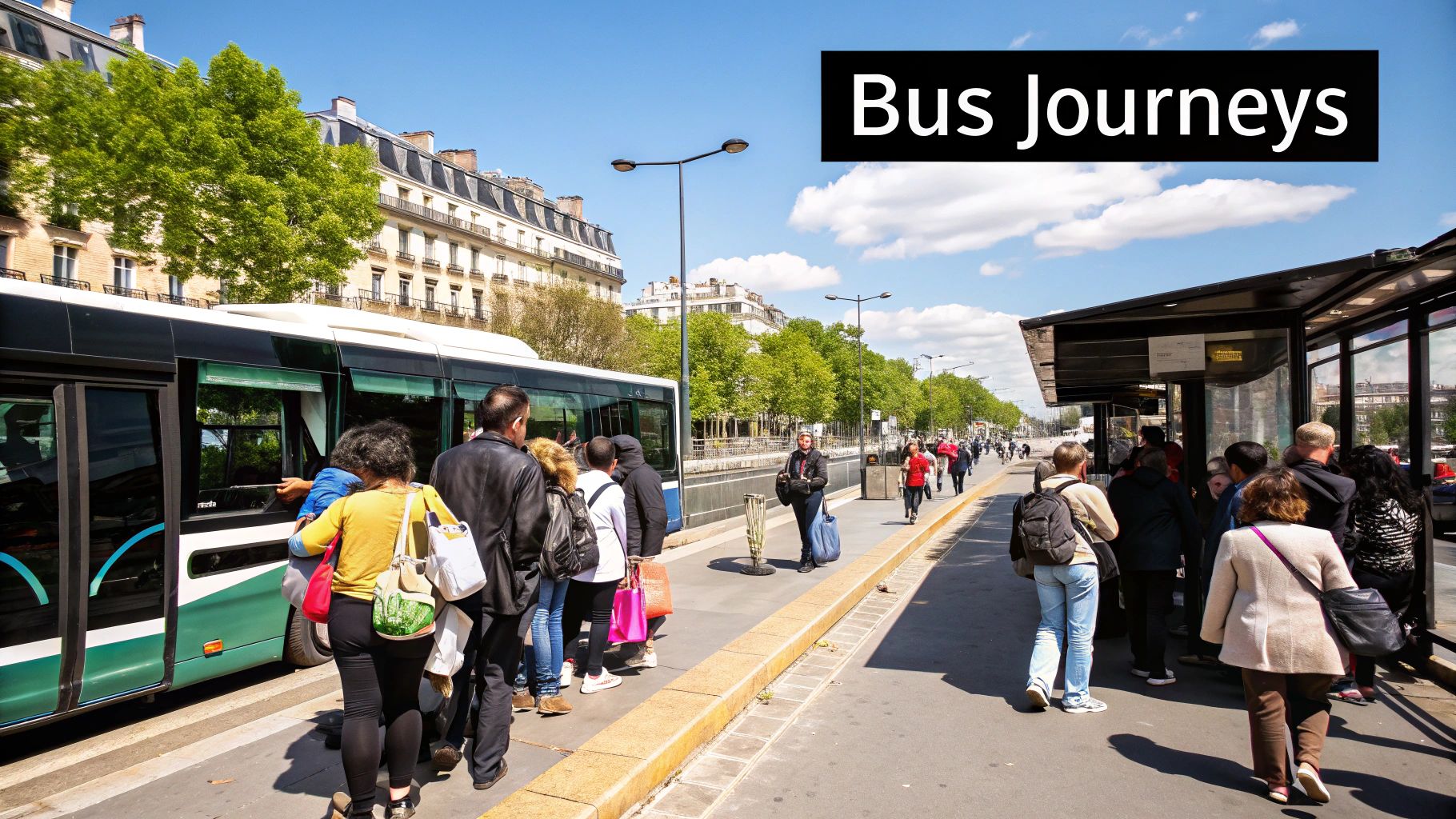
Most visitors to Paris naturally gravitate toward the Métro, but the city's extensive bus system offers a completely different way to experience the French capital. Taking the bus lets you see Paris from street level while avoiding underground crowds and discovering scenic routes you might otherwise miss. With some simple tips, you can make the most of this often-overlooked transportation option.
Unveiling Scenic Routes and Beating the Crowds
Buses provide stunning above-ground views that you simply can't get in the Métro. Many routes wind along the Seine, offering picture-perfect views of Notre Dame, the Eiffel Tower, and the Louvre as you travel. An added bonus is that buses tend to be less crowded than the packed Métro cars, especially during peak tourist times. This means you can relax and actually enjoy watching Paris life unfold through the windows rather than being squeezed underground.
Decoding Bus Maps and Finding the Best Value
At first glance, Paris bus maps can seem overwhelming. But spend a little time learning the system, and you'll find they're actually quite logical. Each line has its own number and color, making it easy to follow specific routes across the city. Some bus lines are particularly good for sightseeing, passing by major attractions without the high cost of tourist buses. Learn more about how bus routes connect different neighborhoods in our guide to Parisian districts.
Practical Strategies for Bus and Métro Integration
The smartest way to get around Paris is to combine bus and Métro travel. For example, take the Métro for longer trips across the city, then switch to a bus to explore specific neighborhoods in detail. This approach gives you the best of both worlds. Night buses are also worth learning about since they keep running after the Métro closes, helping you get home safely after evening activities.
Utilizing Real-Time Apps and Choosing the Best Seats
The RATP app takes the guesswork out of bus travel by showing exactly when the next bus will arrive. This helps you plan more efficiently and avoid long waits at stops. Where you sit matters too - grab a front seat for the best views of the city, or choose the right side of the bus on popular routes to see famous landmarks. These small details can make your bus journey much more enjoyable and memorable.
Smart Payment Strategies That Save Time and Money
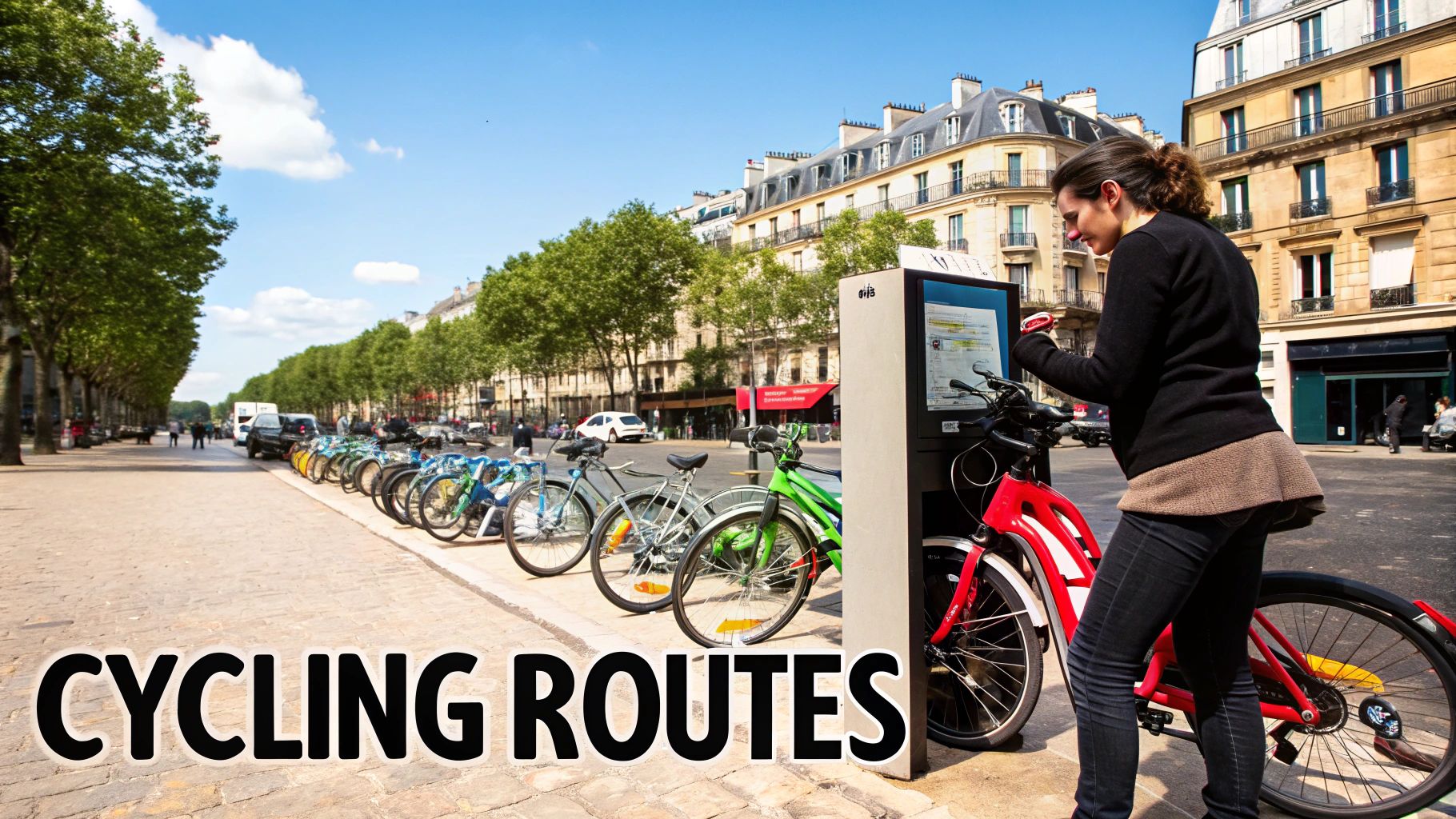
Getting around Paris affordably starts with choosing the right payment method for public transportation. Your choice can make a big difference in both cost and convenience during your stay. Short-term visitors may find single tickets or tourist passes most practical, while those staying longer might save more with a Navigo Découverte pass. Let's look at the key options to help you decide what works best.
Understanding the Navigo Découverte Pass
The Navigo Découverte pass offers unlimited rides on all Paris public transit - Metro, bus, RER trains, and trams within your chosen zones. While it provides excellent value for frequent riders, there are some important details to note. The pass runs Monday through Sunday only, so timing your purchase matters. You'll need to pay a small fee for the card itself and provide a passport photo. For travelers planning to explore beyond central Paris, the savings can be substantial despite these minor requirements.
Evaluating Tourist Passes and Individual Tickets
Tourist passes like Paris Visite include unlimited transit plus attraction discounts, but often cost more than Navigo Découverte if you mainly need transportation. Individual t+ tickets provide flexibility for occasional trips but buying them repeatedly gets expensive and inconvenient for frequent riders. Consider your plans carefully - if you'll mostly explore one area on foot with occasional transit use, a book of t+ tickets might be perfect. But if you'll rely heavily on public transit, a pass could save you money and hassle.
Zone Restrictions and Group Travel Savings
Paris transit uses zones, and traveling outside your pass's zones without proper tickets means risking fines. This is especially important for popular day trips to places like Versailles or Disneyland Paris that lie in outer zones. Groups can save by purchasing carnets (sets of 10 t+ tickets) at a discount versus single tickets. Families benefit further since children under 4 ride free. Understanding these zone and group options helps you avoid unnecessary costs while getting where you need to go.
Optimizing Your Payment Strategy
The best payment approach matches your specific travel patterns and priorities. You might be interested in: How to master Paris. Will you mainly travel within central zones? Navigo Découverte could be ideal. Planning just a few trips in the city center? Consider t+ ticket books. Want to visit lots of attractions? Calculate if a tourist pass's added benefits justify the higher cost. Taking time to understand these options leads to smoother, more affordable travel throughout your Paris stay.
Mastering Major Transport Hubs Without Stress
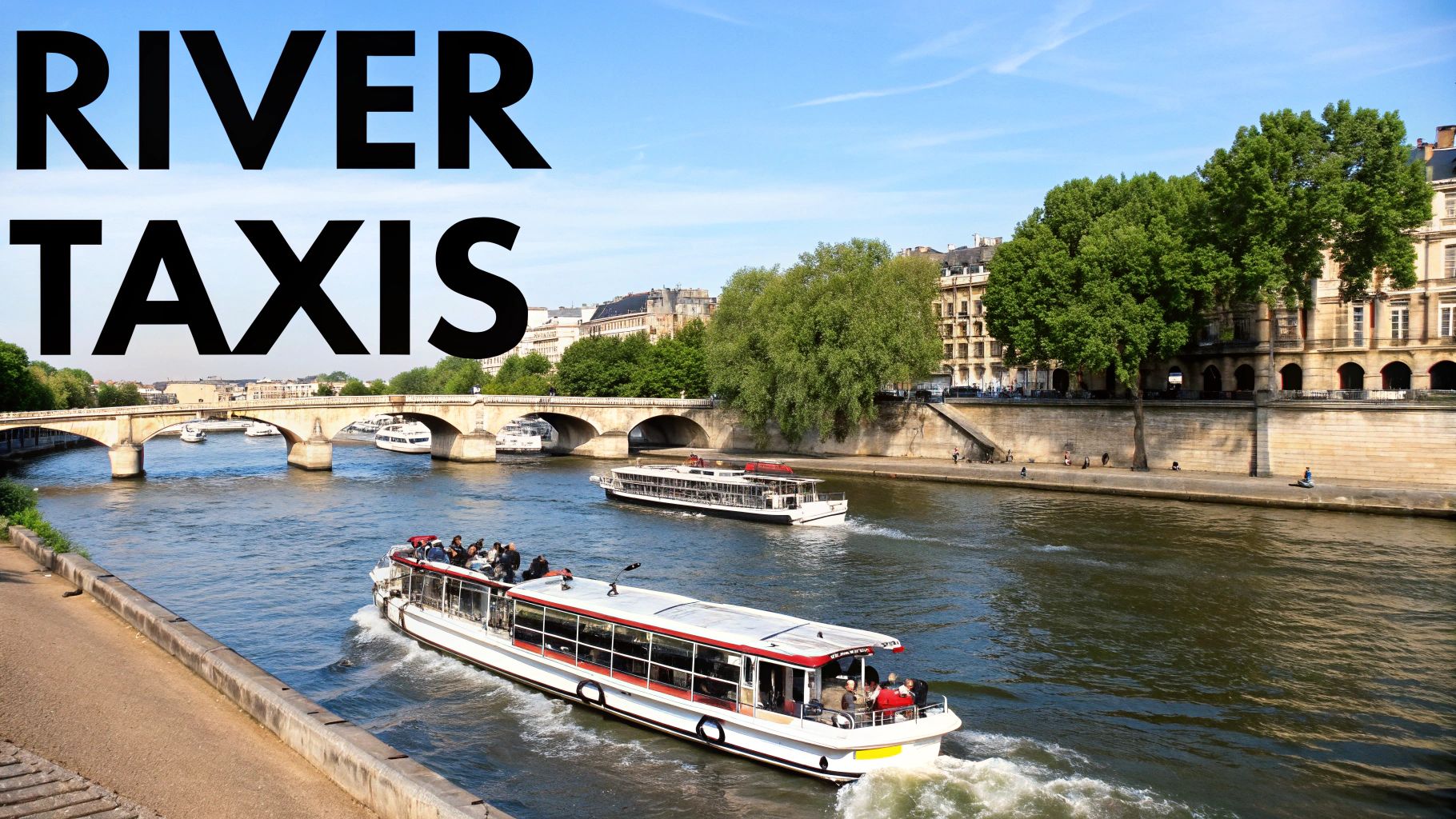
Moving through Paris's main transport hubs can feel daunting at first. These busy intersections where Métro lines, RER trains, and buses converge might seem complex, but understanding them well turns them into valuable tools for efficient travel. With some basic preparation, you can confidently navigate these key points to save time and make your journeys smoother.
Châtelet-Les Halles: A Case Study in Complexity
As one of the world's biggest underground stations, Châtelet-Les Halles shows both the challenges and benefits of Paris's major transport centers. The station connects five Métro lines, three RER lines, and several bus routes. For instance, if you're traveling from Disneyland Paris on the RER A and want to reach the charming Montmartre area via Métro line 4, you'll need to know your way through the station's network of passages and platforms. Having a plan prevents getting lost in this underground maze.
Practical Strategies for Hub Navigation
To move through these complex stations effectively, start by checking the RATP app or station maps before your trip. This helps you visualize your route and plan connections ahead of time. Watch for signs inside stations - "Correspondance" points you to connecting lines, while "Sortie" leads to exits. Since managing luggage through busy hallways and stairs can be tricky, try to pack light or use wheeled bags for easier movement.
The Grand Paris Express: Reshaping the Landscape
The Grand Paris Express project is creating four new Métro lines that will significantly change how people move around Paris, especially in suburban areas. This expansion will establish new transport centers and make getting around the Île-de-France region much easier. For example, the future Saint-Denis Pleyel hub will link several Grand Paris Express lines with current transport networks, offering more direct travel options.
Expert Tips for Seamless Transfers
Make your transport hub experience smoother with these tested strategies:
Off-Peak Travel: Plan trips outside rush hours (8:00-10:00 am and 5:00-7:00 pm) to avoid the biggest crowds.
Platform Positioning: Learn exactly where your connecting platform is located using station maps or the RATP app to save time.
Connection Corridors: Use the designated transfer passages, which often provide quicker routes between lines than going through the main station area.
Escalator Etiquette: Keep to the right on escalators so others can walk up on the left, helping everyone move efficiently.
By getting comfortable with these transport hubs, you'll make the most of Paris's public transport system and travel like a local. This skill helps you connect easily to different parts of the city, giving you more time to enjoy what Paris offers and less time worrying about getting around.
Embracing Paris's Eco-Friendly Transport Evolution
Paris is becoming a model for sustainable urban transportation while preserving its historic charm. The city's transport system is undergoing meaningful changes that benefit both the environment and travelers. From quiet electric buses to efficient automated metro lines, these improvements are making it easier and cleaner to explore the City of Light.
The Rise of Electric Buses
A noticeable change is taking place on Paris's streets as electric buses gradually replace diesel vehicles. The RATP, Paris's public transport operator, is steadily expanding its electric bus fleet while phasing out diesel buses. These modern electric vehicles offer a more pleasant journey - they run quietly, produce zero emissions, and come equipped with improved accessibility features. For passengers, this means enjoying Paris's scenic views while knowing their trip helps create cleaner air and quieter streets.
Automated Métro Lines: A Glimpse into the Future
The iconic Paris Métro is becoming more efficient through automation. Lines 1, 4, and 14 now run without drivers, allowing for more frequent service and shorter wait times. This upgrade is especially valuable during rush hours when reliable, consistent service matters most. The automated lines can also carry more passengers, helping reduce overcrowding on these busy routes. These improvements show how Paris is thoughtfully modernizing its classic metro system.
Choosing Green: Convenience Meets Responsibility
Paris offers many ways to travel sustainably without sacrificing convenience. The Vélib' bike-sharing program lets you explore the city at your own pace while reducing emissions. Whether you're cycling along the Seine, taking a modern tram, or riding an electric bus, choosing eco-friendly transport in Paris is straightforward and practical. These options are well-integrated into the city's transport network, making sustainable travel an easy choice.
The Grand Paris Express: Shaping Tomorrow's Transport
The Grand Paris Express project demonstrates Paris's dedication to better connecting the entire region. This major expansion will add four new metro lines, extending service well beyond the city center. The new routes will directly connect suburban areas to central Paris, significantly reducing travel times for commuters. Built with environmental protection in mind, these lines will create a more accessible network while minimizing their ecological impact. When complete, the Grand Paris Express will help make traveling throughout the greater Paris region faster, easier, and more environmentally responsible.
Essential Strategies for Stress-Free Travel
Moving around a city like Paris might seem daunting, but smart planning makes local transport easy and enjoyable. By applying simple tips from experienced travelers and locals, you can navigate the city's network confidently and focus on exploring rather than worrying about getting around.
Handling Luggage Like a Pro
Paris's historic charm comes with some practical challenges - cobblestone streets and stations without modern amenities can make transporting luggage tricky. Pack as lightly as possible and choose bags with wheels or backpacks that are easy to carry. Small changes make a big difference, especially if you're planning day trips to attractions like those featured in our guide 7 Absolute Must-See Attractions in Paris, France. Take a few minutes to study station maps before heading out so you can find routes with elevators and accessible exits.
Navigating Service Disruptions and Strikes
While Paris public transport runs smoothly most days, occasional disruptions do happen. Stay informed by checking the RATP website and app regularly for service updates. Know your backup routes - for example, which bus lines can get you to your destination if the Métro isn't running. Having a local SIM card with data helps you stay connected and quickly find alternatives when needed.
Mobile Apps: Your Pocket-Sized Travel Companion
The right apps make getting around Paris much simpler. The official RATP app provides real-time schedules and route planning, while Citymapper offers clear navigation across all transport types. Rather than downloading multiple apps, pick one or two reliable options and learn to use them well. This focused approach helps you quickly find the information you need.
Paris Transport Etiquette: Blending In Like a Local
Simple courtesies make travel smoother for everyone. Keep doorways and aisles clear, give up your seat when needed, and keep conversations quiet. Just as you'd be mindful when visiting museums or monuments, showing consideration on public transport helps create a pleasant experience for all passengers. These small gestures go a long way in showing respect for local customs.
Seeking Assistance: When You Need a Helping Hand
Even with good preparation, questions can come up. Don't hesitate to ask RATP staff or fellow travelers for help finding your way. Many Parisians are happy to assist visitors, and basic hand gestures often bridge any language gaps. Getting help when needed is simply practical - like asking museum staff about exhibits, it can lead to useful local insights that improve your journey.
Planning your Paris adventure? Discover the perfect blend of Parisian charm and modern comfort at Boutique Hotels Paris. Book your stay today!